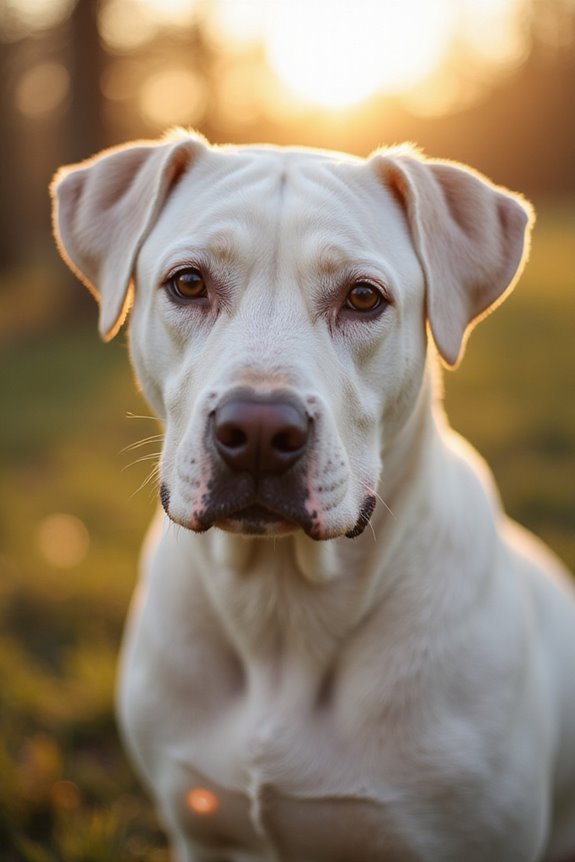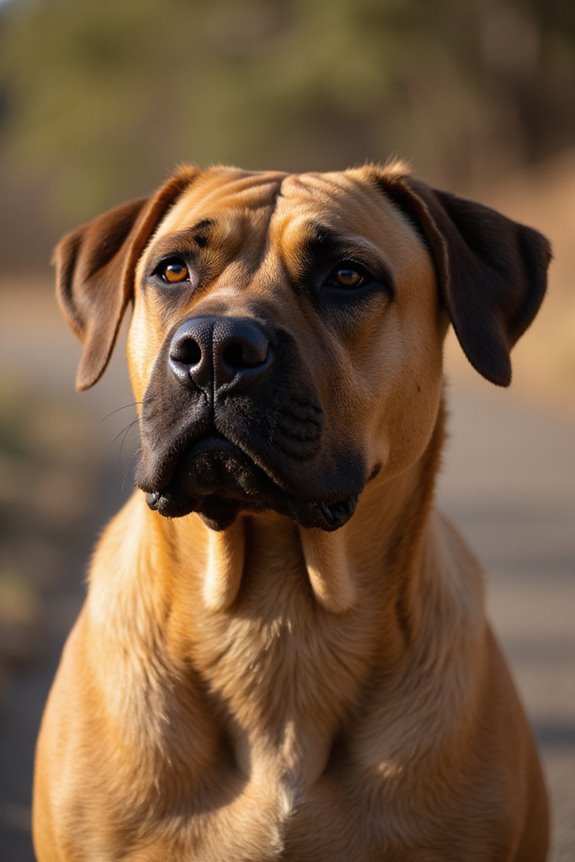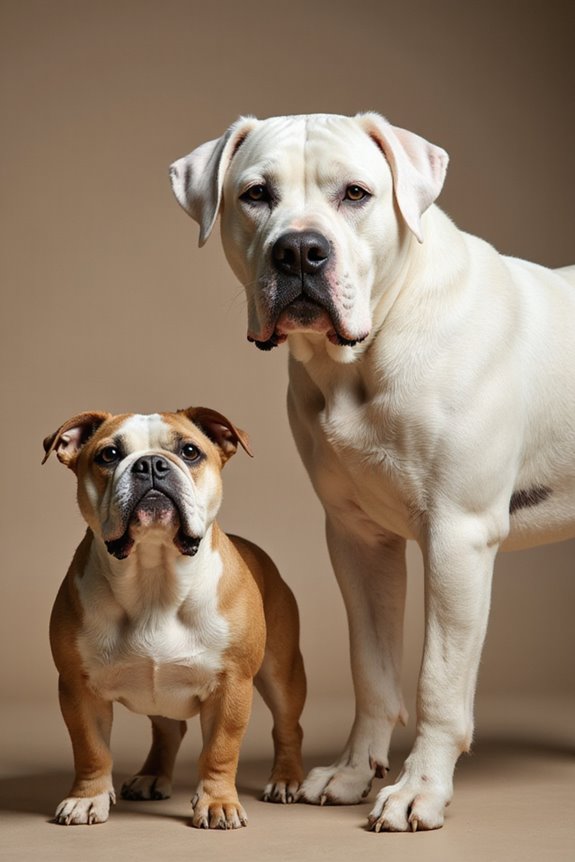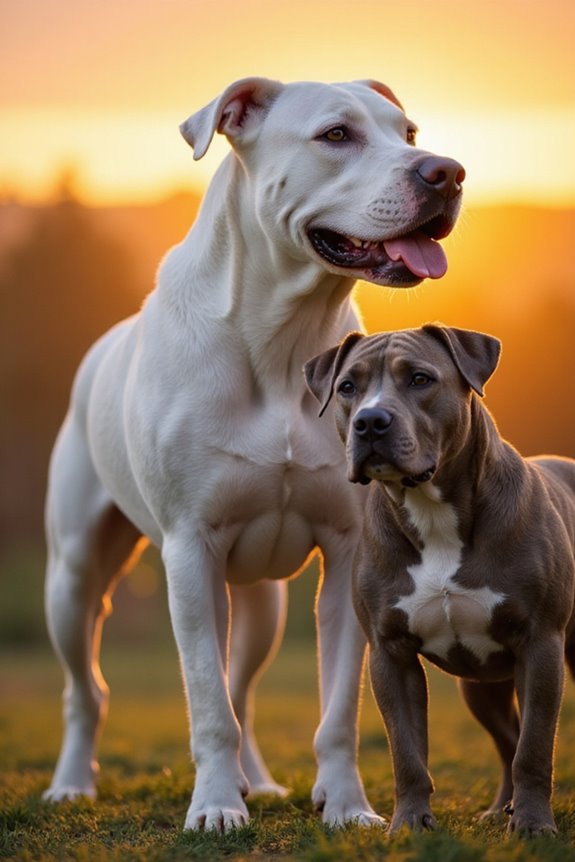The Dogo Argentino and the mountain lion represent two formidable predators within Argentina’s wilderness. The Dogo, weighing 90–105 pounds and known for its endurance and pack behavior, contrasts sharply with the markedly larger mountain lion, which can weigh up to 220 pounds. Each species employs unique hunting strategies, with the mountain lion using stealth and solitary ambush techniques, while the Dogo Argentino relies on group coordination. Understanding their differences sheds light on their interactions in the wild, providing further insights into their coexistence.
Key Takeaways
- Dogo Argentinos exhibit strong pack behavior, making them effective in group hunting, while mountain lions are solitary hunters relying on stealth.
- In an incident, a Dogo Argentino named Morocho intervened during a puma attack, showcasing their protective instincts and loyalty.
- The physical size advantage of mountain lions (up to 220 pounds) poses a significant threat to Dogo Argentinos (90-105 pounds) in direct confrontations.
- Mountain lions use ambush tactics for hunting, contrasting with the endurance and coordinated attacks of Dogo Argentinos during encounters.
- Both species coexist in the Argentine wilderness, adapted to their respective environments with unique strengths and survival strategies.
Physical Characteristics of Dogo Argentino and Mountain Lion
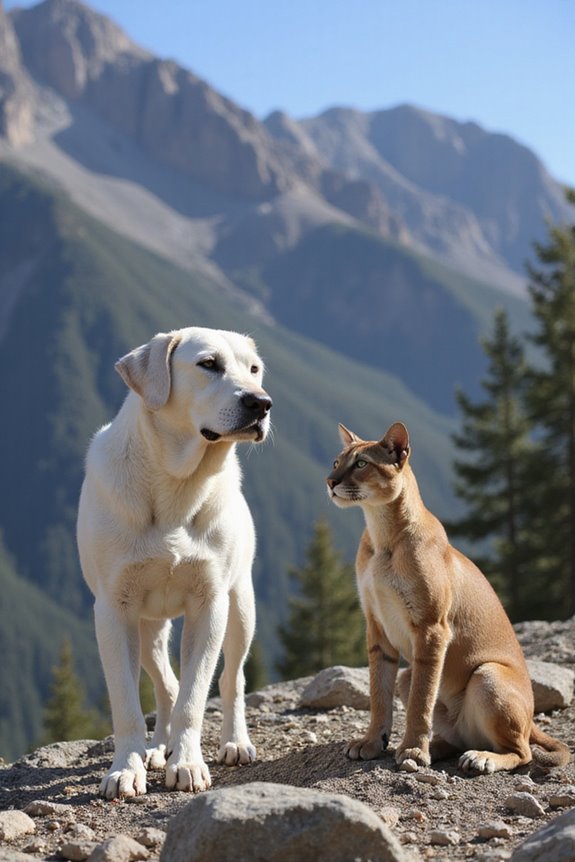
When comparing the physical characteristics of the Dogo Argentino and the mountain lion, it’s essential to acknowledge their significant differences and similarities.
Size Comparison
- Dogo Argentinos typically stand 24–27 inches tall and weigh between 90 to 105 pounds.
- Mountain lions vary greatly, weighing between 64 to 220 pounds and measuring 3.25 to 5.25 feet in body length.
Coat Characteristics
- The Dogo Argentino boasts a short, smooth, and entirely white coat, providing heat reflection.
- Mountain lions, on the other hand, have short, coarse fur that varies from tawny to gray, aiding in camouflage across diverse habitats.
Behavioral Differences Between the Two Species
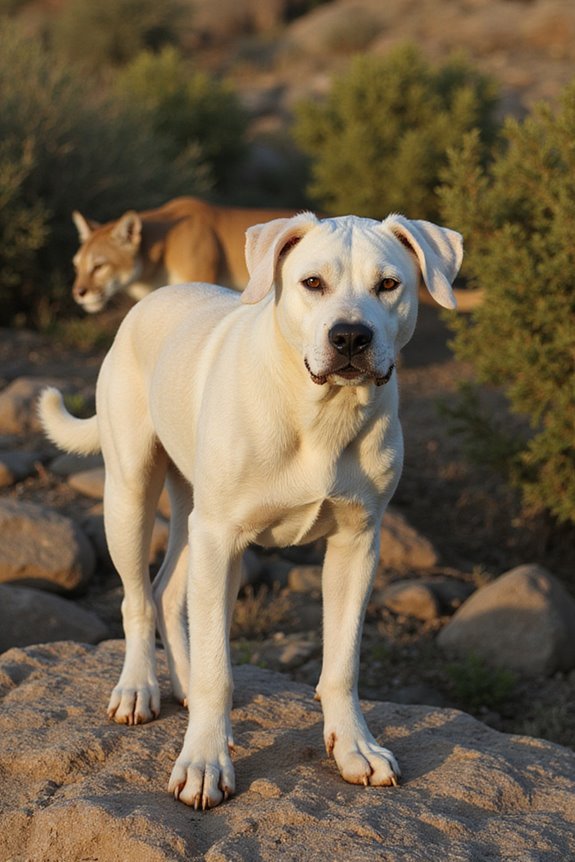
Behavioral differences between the Dogo Argentino and mountain lion reveal important insights into their hunting strategies and social structures.
- Social Behavior:
- Dogo Argentinos exhibit strong pack behavior, coordinating attacks to pursue large game effectively.
- In contrast, mountain lions are solitary hunters, relying solely on their stealth and techniques.
- Hunting Strategies:
- The mountain lion employs ambush tactics, using camouflage and speed to silently stalk prey.
- Dogo Argentinos leverage endurance and strength within a group, engaging actively and directly in confrontations.
This contrasts sharply with the mountain lion’s tendency to avoid conflict, opting for solo, decisive strikes. Each species thrives through unique strategies, reflecting their adaptations to environmental demands and social structures.
Notable Encounters: Morocho’s Heroic Stand
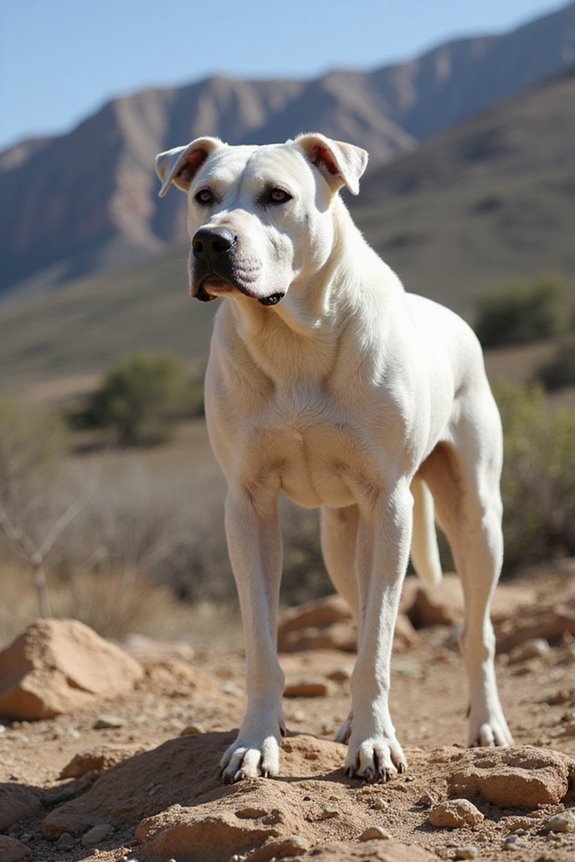
The incident involving Morocho, a Dogo Argentino, serves as a remarkable example of canine bravery and loyalty, particularly in the context of wildlife encounters. On a family farm in Argentina, Morocho displayed instinctive bravery as he intervened during a puma attack that threatened two young girls, Yoli and Sophie. As they picked figs, the sudden appearance of the puma set the scene for a confrontation that would test Morocho’s limits. Engaging the predator directly, he exhibited heroic loyalty, risking his life to protect the girls. Despite sustaining significant injuries in the process, Morocho ultimately guaranteed their safety. His courageous actions not only highlight the protective nature of Dogo Argentinos but also reinforce their essential role in rural life amidst wildlife interactions.
Strengths and Weaknesses in Direct Conflicts

In evaluating the strengths and weaknesses of the Dogo Argentino and mountain lion in direct confrontations, several critical factors come into play.
- Physical Strength and Size Comparison
- The mountain lion’s size (148-232 lbs) gives it a significant strength advantage over the Dogo Argentino (88-100 lbs).
- Despite this, the Dogo’s 500 PSI bite force and stamina provide it with essential tools for survival.
- Mountain lions are faster, employing stealth for ambush tactics, while the Dogo’s pack hunting enhances its effectiveness in groups.
- Mountain lions utilize powerful bites and sharp claws in close combat, whereas the Dogo relies on endurance and gripping its opponent.
- Dogo Argentino:
- Originates from Córdoba, Argentina, adapting to varied terrains like forests and mountains.
- Needs stamina and agility to navigate rugged environments.
- Mountain Lion:
- Occupies diverse habitats across the Americas, including forests and shrublands.
- Prefers territories providing cover, prey, and water sources.
- Physical Attributes:
- Mountain lions weigh between 148-232 lbs and can reach 40 mph.
- Dogo Argentinos weigh 88-100 lbs, relying on strong legs and a powerful bite (500 PSI).
- Hunting Techniques and Strategies:
- Mountain lions utilize stealth and are ambush predators, while Dogos may be trained for pack hunting, showing endurance during confrontations.
- Survival Instincts:
- In most encounters, mountain lions prevail due to size and speed.
- However, trained Dogos can potentially turn the tides through persistence and a strong attack.
This strength comparison reveals the tactical advantages inherent in each species.
Habitat and Environmental Contexts
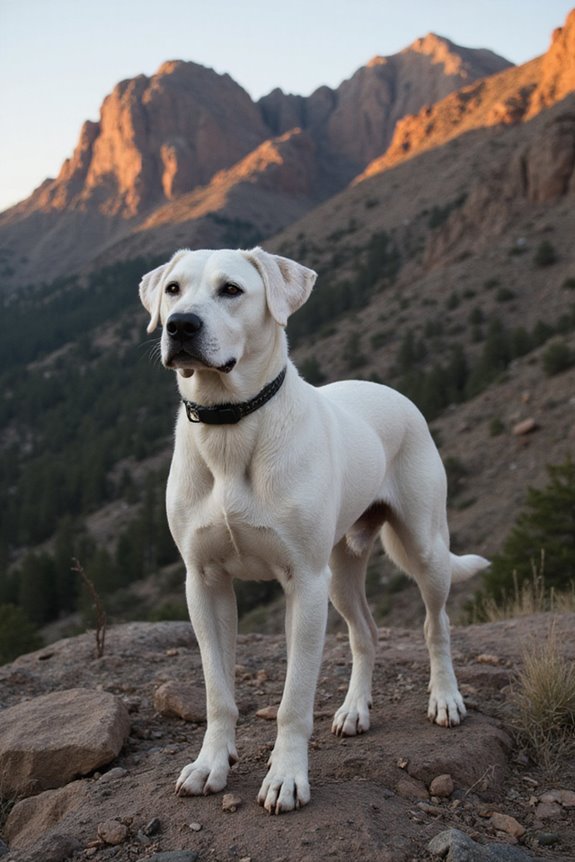
While exploring the habitat and environmental contexts of the Dogo Argentino and mountain lion, we uncover the unique qualities that enable each species to thrive within their respective environments.
Both animals face similar habitat challenges, yet they adapt uniquely. Key aspects include:
These habitat similarities highlight their environmental adaptations and mutual coexistence. They occupy overlapping regions, such as forest edges and foothills, emphasizing their interdependence in the Argentine wilderness.
Analyzing Outcomes: When Two Predators Meet
Understanding the outcomes of encounters between a Dogo Argentino and a mountain lion requires examining various factors, including physical attributes, hunting strategies, and behavioral traits.
These dynamics underline the complexities of predator interactions in the wild.
Frequently Asked Questions
What Are the Historical Origins of the Dogo Argentino Breed?
When I think of the Dogo Argentino, I envision a fierce yet loyal guardian. This breed arose from combining Spanish Mastiffs and fighting dogs, sculpted by Antonio Nores Martinez for hunting in Argentina’s wild landscapes.
How Do Mountain Lions Communicate With Each Other?
I’ve learned that mountain lions communicate through various vocalizations and behaviors. They use distinctive sounds and territory marking to express availability and presence, revealing the fascinating complexity of their social interactions in the wild.
Are Dogo Argentinos Suitable for Family Pets?
Picture a loyal guardian by your side—Dogo Argentinos boast remarkable temperament traits that can make them wonderful family pets. Their protective nature thrives with love, ensuring compatibility, especially when raised with nurturing guidance and socialization.
What Is the Typical Lifespan of a Mountain Lion?
I’ve learned that the mountain lion lifespan averages 8 to 13 years in the wild, influenced by their behavior and environment. In captivity, they can live up to 25 years, thanks to better care and safety.
How Do Both Species Adapt to Changing Environments?
When I think about adaptation strategies, I see how both species showcase environmental resilience. Dogo Argentinos thrive in structured settings, while mountain lions flexibly navigate their wild habitats, showcasing nature’s incredible ability to adjust and survive.

